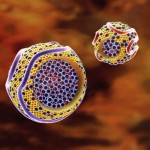Scope: Docosahexaenoic acid (DHA) has been shown to exhibit anticancer actions in vitro and in vivo in a variety of cancers. Here, we investigated the role for DHA in inducing apoptosis in triple-negative breast cancer (TNBC) and studied the mechanisms of action.
Methods and Results: DHA induces apoptosis as detected byAnnexinV-FITC/PI assay as well as induces cleavage of caspase-8 and -9, endoplasmic reticulum stress (ERS), and elevated levels of death receptor-5 (DR5) protein expression as detected by western blot assays. Chemical inhibitors of caspase-8 and -9 and small interfering RNAs (siRNAs) show DHA to induce ERS/CHOP/DR5-mediated caspase-8 and -9 dependent apoptosis. Furthermore, DHA induces elevated cellular levels of reactive oxygen species (ROS) and antioxidant; RRR-α-tocopherol (_T) blocked DHA-induced apoptotic events. In contrast to the antagonistic impact of αT, gamma tocotrienol(γT3) was demonstrated to cooperate with DHA in inducing apoptotic events in TNBC cells.
Conclusion: Data, for the first time, demonstrate thatDHAinduces apoptosis in TNBC cells via activation of ERS/CHOP/DR5-mediated caspase-8 and -9 dependent pro-apoptotic events, and that different forms of vitamin E exhibit distinct effects on DHA-induced apoptosis; namely, inhibition by αT and enhancement by γT3.

